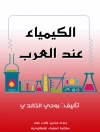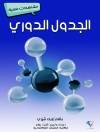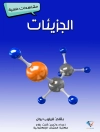Conceptual and technological advances in chemistry and biology have transformed the drug discovery process. Evolutionary pressure among the diverse scientific and engineering disciplines that contribute to the identification of biologically active compounds has resulted in synergistic improvements at every step in the process. Exploiting Chemical Diversity for Drug Discovery encompasses the many components of this transformation and presents the current state-of-the-art of this critical endeavour. From the theoretical and operational considerations in generating a collection of compounds to screen, to the design and implementation of high-capacity and high-quality assays that provide the most useful biological information, this book provides a comprehensive overview of modern approaches to lead identification. Beginning with an introductory overview, subsequent chapters address topics that include the design of chemical libraries and methods for optimizing their diversity; automated and accelerated chemistry; high throughput assay design and detection techniques; and strategies for data analysis and property optimization. Written by experts in the field, both academic and industrial, and illustrated in full colour, this book provides an excellent overview for current practitioners and will also serve as a stimulating resource for future generations. Researchers in organic and medicinal chemistry, the biological and pharmacological sciences, as well as those interested in allied computational and engineering disciplines will value the comprehensive and up-to-date coverage.
विषयसूची
Part One: Operational Developments in Chemistry;
Chapter 1: The Use of Polymer-assisted Solution-phase Synthesis and Automation for the High-throughput Preparation of Biologically Active Compounds;
1: Introduction;
2: PASP Synthesis Approaches to Biologically Active Compounds;
3: Automated PASP Synthesis of Biologically Active Molecules;
4: Flow Chemistry and Automation in the Synthesis of Drug-Like Molecules;
5: Conclusion;
6: References;
Chapter 2: Accelerated Chemistry: Microwave, Sonochemical, and Fluorous Phase Techniques;
1: Introduction;
2: Microwave Enhanced Chemistry;
3: Sonochemistry as a Means to Accelerate Synthesis;
4: Fluorous Phase Techniques;
5: Conclusion;
6: References;
Part Two: Conceptual Advances in Synthesis;
Chapter 3: Biosynthesis of ‘Unnatural’ Natural Products;
1: Introduction;
2: Type I Polyketide Synthases;
3: Type II Polyketide Synthases;
4: Type III Polyketide Synthase;
5: Conclusions;
6: Acknowledgements;
7: References;
Chapter 4: Vombinatorial Synthetic Design: the Balance of Novelty and Familiarity;
1: Biological Macromolecules – Strength in Numbers;
2: Oligomer Synthesis – Improving on Mother Nature;
3: Random, Discovery, or Prospecting Libraries – the Quest for the Universal Scaffold;
4: Privileged Scaffolds – Look Where the Light is Brightest;
5: The Decoration or Synthesis of Novel Scaffolds – Aid for the Underprivileged;
6: Target Class Libraries – Diversity with a Purpose;
7: Peptide and Nucleotide Libraries Redux;
8: Lead Discovery or Drug Discovery – Size Does Matter;
9: Natural Product Scaffolds for Combinatorial Chemistry – Why Re-invent the Wheel?;
10: From Natural Products to Natural Product-like Libraries – Hubris or Progress?;
11: Lead Discovery and Combinatorial Chemistry – What Have we Learned?;
12: References;
Chapter 5: Compound Collections: Acquisition, Annotation, and Access;
1: Introduction;
2: Commercial Offerings;
3: Companies Providing Non-proprietry, Non-parallel Synthesised Libraries (Shared-pool/’Collected Collections’);
4: Companies Providing In-house Designed, Parallel Synthesised Libraries;
5: Compound Selection and Database Filtering;
6: Substructure Similarity/Dissimilarity;
7: Pharmacophore Analysis;
8: Lipinski Rule-of-Five (LRo F);
9: Topological Polar Surface Area (t PSA) and Blood-Brain-Barrier Permeability (Log BB);
10: Solubility;
11: Examples of the Use of Chemical Annotation and Pharmacophore based lead-hopping;
12: Compound Acquisition;
13: References;
Chapter 6: Chemical Diversity: Definition and Quantification;
1: Introduction;
2: Diversity Metrics;
3: Molecular Description;
4: Dimensionality Reduction;
5: Subset Selection and Classification;
6: Conclusion;
7: Abbreviations;
8: References;
Part Three: Mining: Turning a Hit into a Lead;
Chapter 7: Focused Libraries: the Evolution in Strategy from Large Diversity Libraries to the Focused Library Approach;
1: Introduction;
2: A Synergistic, Multidisciplinary Approach to Library Conception;
3: Library Design Concepts;
4: Focused libraries;
5: Summary;
6: References;
Chapter 8:Translating Peptides into Small Molecules;
1: Peptides as Drugs: The Good, the Bad and the Ugly;
2: Origin of Biologically Active Peptides;
3: General Strategy for Translating Peptides into Small Molecules;
4: Tailoring Peptide Sequences for Their Translation into Small Molecules;
5: Transformation of peptide Ligands into Small Molecules Using Computational Approaches;
6: References;
Part Four: Operational Developments in Screening;
Chapter 9: High Density Plates, Microarrays, Microfluidics;
1: Functional High-density Well Plates for High-throughput Assays;
2: Parallel Liquid Handling of Low-volume Samples;
3: Microarray Assays on Chips;
4: Prospects for Multi-Parameter Assays;
5: References;
Chapter 10: Fluorescence Technologies for the Investigation of Chemical Libraries;
1: Introduction;
2: Dissociation Enhanced Lanthanide Fluoroimmunoassay (DELFIA);
3: Enzyme Fragment Complementation (EFC);
4: Fluorescence Polarization (FP);
5: Fluorescence Correlation Spectroscopy (FCS);
6: Amplified Luminescent Proximity Homogeneous Assay (Alphascreen);
7: Fluorescence Resonance Energy Transfer (FRET);
8: Bioluminescence Resonance Energy Transfer (BRET);
9: Homogeneous Time Resolved Fluorescence (HTRF);
10: Conclusion;
11: References;
Chapter 11: The Use of Genetically Engineered Cell-based Assays in in-vitro Drug Discovery;
1: Introduction;
2: Genetic Engineering for Cell-based Assays;
3: Reporter-based Assays;
4: Assays to Measure Intracellular Calcium;
5: Assays to Monitor Protein-Protein Interactions;
6: Conclusions and Outlook;
7: References;
Chapter 12: NMR Based Screening, a Powerful Tool in Fragment-based Drug Discovery;
1: Introduction;
2: NMR Screening: General Aspects;
3: Ligand- vs Traget-detected Methods;
4: Incorporation of NMR into the Drug Discovery Process;
5: Representative Case Studies;
6: Conclusion;
7: References;
Chapter 13: Screening Chemical Microarrays: Methods and Applications;
1: Introduction;
2: Screening of Chemical Microarrays;
3: Applications of Chemical Microarrays;
4: Conclusion;
5: References;
Part Five: Conceptual Advances in Lead Evaluation;
Chapter 14: Screen/Counter-screen: Early Assessment of Selectivity;
1: Introduction;
2: Approaches Used for Selection of Drug Candidates;
3: Summary;
4: References;
Chapter 15: Concepts for in-vitro Profiling – Drug Activity, Selectivity and Liability;
1: Introduction;
2: Physico Chemical Parameters;
3: Permeability;
4: Metabolism;
5: Protein Binding;
6: Toxicity;
7: Investigation of Compound Selectivity;
8: Conclusion and Outlook;
9: Reference;
Chapter 16: In silico Surrogates for in vivo Properties: Profiling for ADME and Toxicological Behavior;
1: In silico Surrogates for in vivo Properties;
2: Estimation of Biopharmaceutical Properties;
3: Estimation of Pharmacokinetic Properties;
4: Estimation of Toxicological Properties;
5: Integration of Surrogate Data and Estimations with Physiological Simulation;
6: References;
Chapter 17: Use of High Content Screening in Chemical Optimization;
1: Introduction;
2: HCS Systems;
3: Examples Show the Power of HCS;
4: Summary












